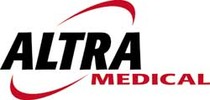 Loading... Please wait...
Loading... Please wait...- 727-541-5900
- My Account
Currency Displayed in
Difference between Semi-Automated and Fully Automatic (Autoshock) AEDs
Difference between Semi-Automated and Fully Automatic (Autoshock) AEDs
 People considering the purchase of a new AED are faced with a decision of whether to select a Semi-Automated External Defibrillator or a Fully Automatic External Defibrillator. How do you choose?
People considering the purchase of a new AED are faced with a decision of whether to select a Semi-Automated External Defibrillator or a Fully Automatic External Defibrillator. How do you choose?
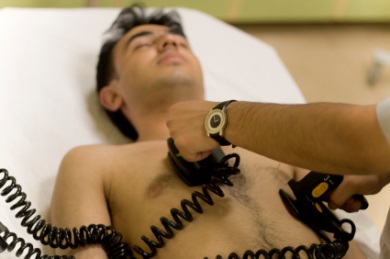
Many untrained people have an image of defibrillating a person from TV where they need to use paddles to shock the patient. No, that is not what an AED does. An AED (automated external defibrillator) – is not a manual defibrillator with paddles. An AED where they need to use paddles to shock the patient. No, that is not what an AED does.
An AED (automated external defibrillator) – is not a manual defibrillator with paddles. An AED uses adhesive pads that when placed on a victim will automatically analyze the patient’s heart rhythm and tell you if the person needs to be shocked.
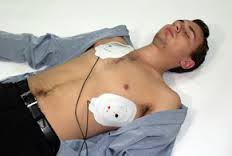
The AED reads the patient’s heart rhythm and will tell you when a shock is needed. It replaces the experience of a medical professional in determining if the person is in a lethal heart rhythm called ventricular fibrillation (or an unstable ventricular tachycardia).
How does each type of AED work?
A Semi-Automated External Defibrillator is used by lay responders to treat someone in cardiac arrest. The user pushes  the on button, pulls a handle or opens the lid and the AED starts to talk to you. The user will open the pads and place them on the patient as indicated by pictures on the pads. The AED automatically analyses the patient’s heart rhythm to determine if a shock is needed. If a shock is needed the AED will talk to you and tell you to clear the patient and push a shock button.
the on button, pulls a handle or opens the lid and the AED starts to talk to you. The user will open the pads and place them on the patient as indicated by pictures on the pads. The AED automatically analyses the patient’s heart rhythm to determine if a shock is needed. If a shock is needed the AED will talk to you and tell you to clear the patient and push a shock button.
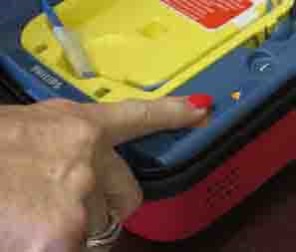
The person using the AED will look to be sure no one is touching the patient, and when safe will push the shock button. The AED will deliver the shock and will then advise to do CPR if needed. Some will coach the user in how to do CPR
A Fully Automatic AED or “Autoshock” AED is also used by a lay responder to treat someone in cardiac arrest. The user pushes a button or opens the lid and the AED
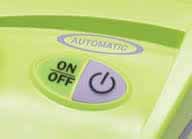 starts to talk to you just like a semi-automated one. The user will open the pads and place them on the patient as indicated by pictures on the pads. Once the pads are in place, the AED analyses the patient’s heart rhythm to determine if a shock is needed. If a shock is needed, the AED will talk to you saying a shock is needed and will automatically shock the patient without you having to push the shock button. It will warn not to touch the patient prior to automatically delivering the shock, but could deliver a shock if someone is touching the patient. Many will also coach the use in how to do CPR.
starts to talk to you just like a semi-automated one. The user will open the pads and place them on the patient as indicated by pictures on the pads. Once the pads are in place, the AED analyses the patient’s heart rhythm to determine if a shock is needed. If a shock is needed, the AED will talk to you saying a shock is needed and will automatically shock the patient without you having to push the shock button. It will warn not to touch the patient prior to automatically delivering the shock, but could deliver a shock if someone is touching the patient. Many will also coach the use in how to do CPR.
The difference between the units is that a Fully Automatic unit will deliver a shock without human intervention and a Semi-Automated AED will require a user to push the actual shock button.
What are the pros and cons of each?
- Control of the Situation
- Speed to treat the patient
- Complies with American Heart Guidelines
Control of Situation
Envision the scene of a cardiac arrest in an office, at a baseball game, in a gym, or at an event. A lay responder will likely be the first person on the scene and may or may not be trained in how to use the AED. People will be standing around telling the person what to do and it may be noisy. People will likely be on cell phones calling 911 and talking.
If a person is using a semi – automated AED they are in complete control of the situation. If the AED advises a shock is needed, a voice command is heard, the  shock button lights up, and tells the person to check to be sure no one is touching the patient and only when it is safe, the user pushes the shock button. The operator is in complete control of when a shock is delivered. It is very unlikely that a bystander or the person operating the devise will get shocked because you are in control of when it is delivered.
shock button lights up, and tells the person to check to be sure no one is touching the patient and only when it is safe, the user pushes the shock button. The operator is in complete control of when a shock is delivered. It is very unlikely that a bystander or the person operating the devise will get shocked because you are in control of when it is delivered.
Envision the same situation with a person that is using a fully automatic auto-shock devise. The devise decides if a shock is needed and delivers the shock automatically without human interaction. This means that whoever is operating the AED or is around the AED needs to be paying attention as the unit tells them when a shock is delivered. There is no assurance that there is no one touching the patient and the risk of someone being shocked is higher. The odds of someone touching the patient increases as the background noise increases or as people are distracted as the unit decides to shock regardless of what is happening at the scene. A shock delivered at the wrong time could theoretically kill or at a minimum severely stun a bystander.
Speed to Treat the Patient
The faster a shock is delivered from the time a person goes down the better their chances are of surviving.
There are differences between manufacturers of defibrillators and differences for the same manufacturer between semi-automated and fully automatic AEDs. In every case a fully automatic AED will take longer than a semi-automatic AED to deliver a shock.
This is an area that is clearly measurable and data can be to evaluate the difference in the time it takes to shock a patient between semi-automatic and fully automatic AEDs.
When a rescuer does CPR prior to defibrillation, they are increasing the blood pressure in the patient and increasing the blood flow and oxygen to the patient’s brain. Recent American Heart Association recommendations emphasize the importance of doing compressions and minimizing the time off the chest for breathing and defibrillation to less than 10 seconds. So the faster that you defibrillate the better the chances are of success. The longer the delay to delivering the shock, the lower your chances are of survival.
The times vary by manufacturer due to their voice prompt and analysis sequence, but the following are measured times to shock:
 There is a big difference between an AED that only takes eight seconds to deliver a shock to a patient and one that takes 25 seconds.
There is a big difference between an AED that only takes eight seconds to deliver a shock to a patient and one that takes 25 seconds.
Cost
For most manufacturers, there is no or minimal difference between fully-automatic and semi-automatic defibrillators. List prices may have no difference or are in the range of $50 to $100 difference between semi-automatic and Autoshock units. There is no difference in the cost of pads, batteries, etc. between one manufacturers semi – automatic and fully automatic AEDs. Visit our AED Cost of Ownership to compare the differences.
American Heart Association (AHA) Guidelines
The current (2015) AHA Guidelines recommend the use of an Automated External Defibrillator by trained lay responders in the treatment of Sudden Cardiac Arrest. They do not differentiate between fully automatic and semi-automatic AEDs. There is no endorsement for Autoshock devises, nor denouncement of Autoshock devises.
The American Heart Association does not endorse one product over another and doesn’t recommend a specific devise.
The AHA Guidelines 2015 and subsequent clarifications, do endorse rapid compressions to the chest with full release. Time off the chest to do rescue breathing of less than 10 seconds and continuing CPR as close to defibrillation as possible to keep the maximum blood pressure up in the patient. Increasing time delay for analysis prior to delivering a shock would according to guidelines would not be recommended.
Clearing the Patient
What happens when someone is touching the patient when a shock is delivered? It depends; if someone is giving CPR and they get hit with a 360 Joule charge they can be severely stunned.
If someone is holding their hand and is shocked they will definitely feel it. Will you die? Occasionally people have, but you will likely get a severe shock.
If you are taking an EMT or Paramedic Course and you fail to clear the patient you will fail the course. If professionals are required to be sure the patient is cleared before they push a shock button, it would seem to be prudent for an untrained lay responder to be sure that the patient is cleared before a shock is delivered and not leave it to a machine to automatically deliver it without regard to what is happening at the scene.
Studies
Our analysis of the references that are often cited below related to making a case for autoshock devises is very weak and based on 12 actual uses. There is insufficient data to be statistically significant and the data cited raise more questions in the studies as to why someone didn’t push the shock button – for example was it because the paramedics arrived on scene, or did the rhythm change, etc.
References:
ECC Guidelines Part 4 The Automated External Defibrillator – Key Link in the Chain of Survival Circulation 2000; 102:1-60-I-76 doi:10.1161/01.CIR.102.suppl_1.I-60
A first city-wide early defibrillation project in a German city: 5-year results of the Bochum against sudden cardiac arrest study; Christoph Hanefel - Scand J Trauma Resuscitation Emergency Medicine 2010: 18:31 Published online 2010 June 15.doi: 10.1186/1757-7241-18-31
Conclusion
We strongly recommend that you chose a semi-automated external defibrillator over a fully automatic defibrillator based on the items cited above:
1) Semi-automated are faster to shock often by 20 seconds – improving the chance of reviving the patient.
2) You are in control of the situation with a semi-automated external defibrillator and it significantly reduces the possibility of someone else accidently getting shocked
3) American Heart requires EMTs and paramedics to clear a patient before delivering a shock, and they are trained, why would you want untrained people to not clear the patient?
4) There is no data to back up the claims that people are afraid to push a button, and in our 16 years of experience in the business have never heard one instance of someone being afraid. If anything people who grab a defibrillator are committed to doing everything they can to help save someone’s life.
